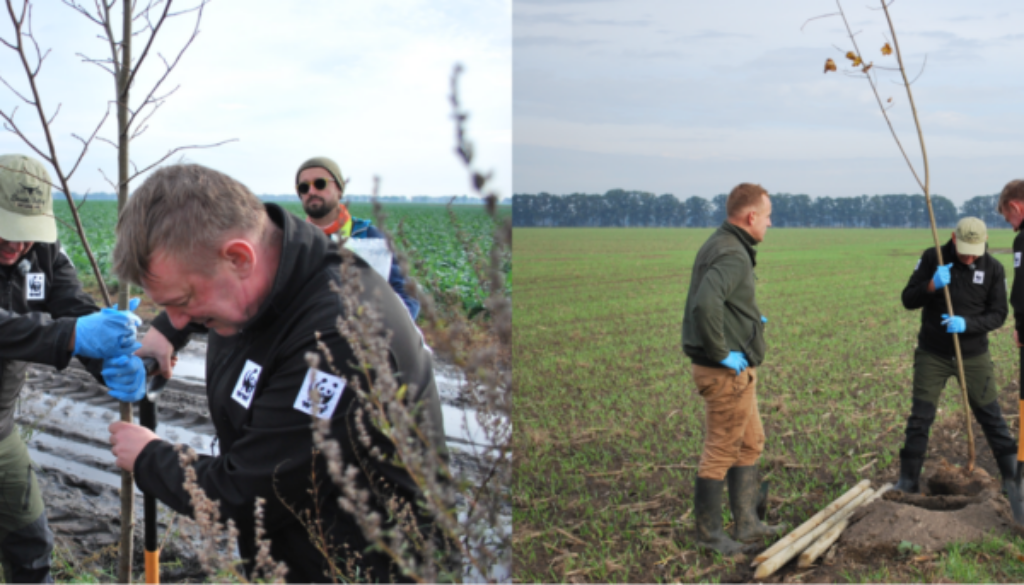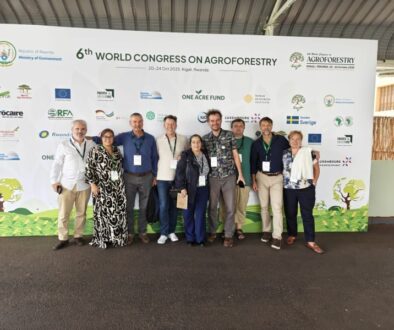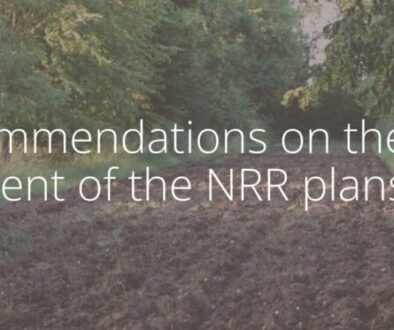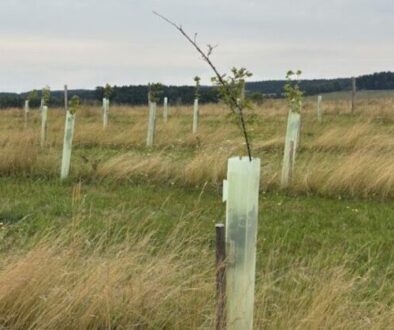Pilot tree planting project by WWF and Lidl in western Poland
Pilot tree planting project by WWF and Lidl in western Poland
WWF Poland together with Lidl Poland carried out a pilot action of tree planting in fields in the municipality of Grodzisk Wielkopolski. In 4 days, 3 rows of trees were created along watercourses, next to fields or between farmland, and a total of 300 trees were planted.
The activities are carried out in the Greater Poland (Wielkopolska) region in western Poland. Greater Poland is the region with the largest precipitation deficit in Poland. The values of their average annual sum range from 500 mm in the central part of the region to more than 600 mm in the northern extremities and are among the lowest in the country. A significant share of post-glacial surface formations, sandy and clayey with good permeability and at the same time low water capacity, increases the risk of a shortage of water available to plants, due to intensive underground runoff, when there is low or no rainfall. For many years, there has been discussion about the progressive process of steppification of the region. Steppification is a dynamic, progressive process of transformation of agricultural and forested areas into grassland communities characteristic of steppe and prairie with lower water requirements. Additionally, wind erosion is on the rise; at present, nearly 27% of agriculturally used soils are threatened by this type of erosion, which is primarily due to their dryness.
Planting windbreak strips not only reduce wind speed but may also increase humidity and reduce water loss from the soil up to a distance of 12-20 times the height of the trees in the windbreak. The trees also allow for an increase in biodiversity in the area, also counteracting the spread of pests and diseases.
The ambassador of the campaign and a shining example of how to reconcile farming with environmental concerns is farmer Patryk Kokocinski. He is the winner of the Baltic Region Farmer of the Year 2021 competition, organized by WWF Poland. He runs a model dairy farm in the Greater Poland province. He has introduced a number of Baltic-friendly practices, including maintaining year-round cover on fields and maintenance of mid-field baulks. The farmer and his family create buffer zones along watercourses and restore mid-field woodlots and windbreaks.
More information (in Polish):
https://www.wwf.pl/wspolnie-z-lidl-polska-odtwarzamy-krajobraz-rolniczy



